How the EMAS Measures Growth in Students' Mathematics Skills Within and Across Years

When the Virginia Kindergarten Readiness Program (VKRP) was initiated in 2013, it was designed to measure students’ school readiness at the start of kindergarten. However, division, school, and program leaders, teachers, and families across Virginia expressed interest in understanding how young students were developing over time and were interested in how to better track student growth from pre-kindergarten through the early grades. Over the years, that led to the expansion of VKRP from the beginning of the pre-k 3 year through the spring of kindergarten.
The Early Mathematics Assessment System (EMAS) is the mathematics measure used as part of VKRP to assess students’ mathematics knowledge and skills. With the expansion of VKRP both downwards to pre-k and upwards to the end of kindergarten, the VKRP team needed to revise the EMAS to ensure that it could measure growth in students’ skills over time.
Expanding the EMAS
When we started to expand the EMAS to measure students’ mathematics skills at additional timepoints beyond the start of kindergarten, the VKRP team faced a challenge: How do you create an assessment that:
- Accurately shows teachers students’ strengths and areas for growth to help teachers plan instruction.
- Measures growth over time.
Doesn’t take too long to administer.
In general, longer assessments tend to be more informative and accurate than shorter assessments. This is because they can include many easy, medium, and difficult items, so they give teachers a lot of information. Furthermore, when you give students the same assessment multiple times a year, you can easily measure growth by comparing students’ total scores at each time point. But we soon realized that a single assessment that included easy through difficult items for students in the fall and spring would be very long. Why? Because young learners grow a great deal in pre-k and kindergarten! Plus, a single, long assessment for each year of school still wouldn’t be able to track growth over multiple years.

Sharing is Caring -- and Informative!
To solve these challenges, the VKRP team worked with statisticians who are experts in developing assessments. They recommended a series of assessment versions that each include some shared items and some unique items. The assessments get a little more difficult with each version. For example, the fall kindergarten EMAS version is a little easier than the mid-year kindergarten EMAS version which is a little easier than the spring kindergarten EMAS version. Students typically have had less opportunities to engage with mathematics content and know less mathematics earlier in the year. Shared items (or as we call them, “linking items”) connect the EMAS versions to each other.
Using data from the overlapping items, scores on each assessment version are converted mathematically to be on the same numerical scale (“scaled scores”). This enables teachers to compare scores from the fall to scores in mid-year and spring to see how much each student’s scores grew. Administrators can also compare performance over time; for example, looking at how students grow in their mathematics skills from pre-kindergarten through kindergarten.
This solution has some advantages:
- It keeps each EMAS version as short as possible.
- It prevents practice effects, where students start to get items correct because they’ve seen them over and over again.
- Each version has some easy, middle, and difficult items, so teachers can identify students’ strengths and areas for growth.
We hope that this information about how the EMAS measures growth in students’ mathematics skills over time is helpful in better understanding the EMAS, and that data from the EMAS is useful in supporting students’ mathematics development in the early years!
More Questions for the VKRP Team? VKRP provides support via the online chat feature when you are in the system, via email at vkrp@virginia.edu, and via toll free at 866-301-8278.

